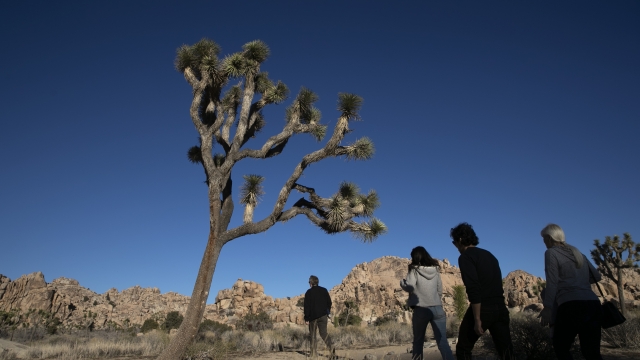Vast landscapes, blue skies and mountain peaks that go on forever; there are many reasons why people view national parks as an escape from our everyday lives, but a new report says national parks are not escaping the effects of air pollution.
"We are concerned to see that air pollution and climate pollution continue to be really problematic health threats for the parks across the country," said Ulla Reeves, interim director of the Clean Air Program with the National Parks Conservation Association (NPCA).
NPCA released their Polluted Parks report last month, an update to a similar report released in 2019. The group advocates for additional protections for national parks.
While there were some modest improvements since 2019, an overwhelming number of national parks exhibited what the group calls unsatisfactory levels of concern.
"Air pollution can travel very far away, many, many miles away from the original sources and the consequences have impacts for people who are visiting the national parks. The consequences are very problematic for nature in particular," said Reeves.
The report looked at three main ways in which air pollution impacts parks: hazy skies, unhealthy air and harm to nature. It ranked each with a level of concern: low, unsatisfactory and significant.
The number of parks that hit the significant concern level in at least one of the impact categories dropped from 96% to 70%, but still the report found that 97% of national parks they studied had air issues, meaning they experienced at least significant or unsatisfactory levels of concern overall when it comes to air pollution.
Breaking it down by impact category: 98% of the parks they studied suffered from haze pollution, 96% faced ozone pollution that impacts humans and 96% of national parks have plants and animals harmed by ozone pollution.
"Ozone can be described as having the effect of a sunburn on the human lungs — so it is dangerous for us to breathe and also it's dangerous for plants. It can actually kind of burn the leaves of trees and other plants and make it harder for them to photosynthesize," said Reeves
The report also looked at how climate change is impacting parks in four categories: invasive species, wildfire, drought and sea-level rise.
The report found that 57% of all national parks face a high risk from at least one of those threats, the most dominant threat being invasive species.
The report listed the 10 park lands most impacted by air pollution. The top three are Sequoia & Kings Canyon National Parks, Joshua Tree National Park and Mojave National Preserve — all in California.
"We certainly hope that people are informed and motivated in reading this report to care about the national parks and to recognize that they are part of our world and they are experiencing these problems just as we are," she said.
Reeves says that recent rules passed by the Biden administration regarding emissions is a step in the right direction and hopes more people get on board in advocating for more policies to help clean the air in our lives and in our parks.
"Our national parks are kind of canaries in the coal mine, they are suffering the consequences too. So let's use that as additional motivation to take action and address climate change and clean up the air pollution," said Reeves.
SEE MORE: Study shows climate change is affecting some Native American tribes
Trending stories at Scrippsnews.com




